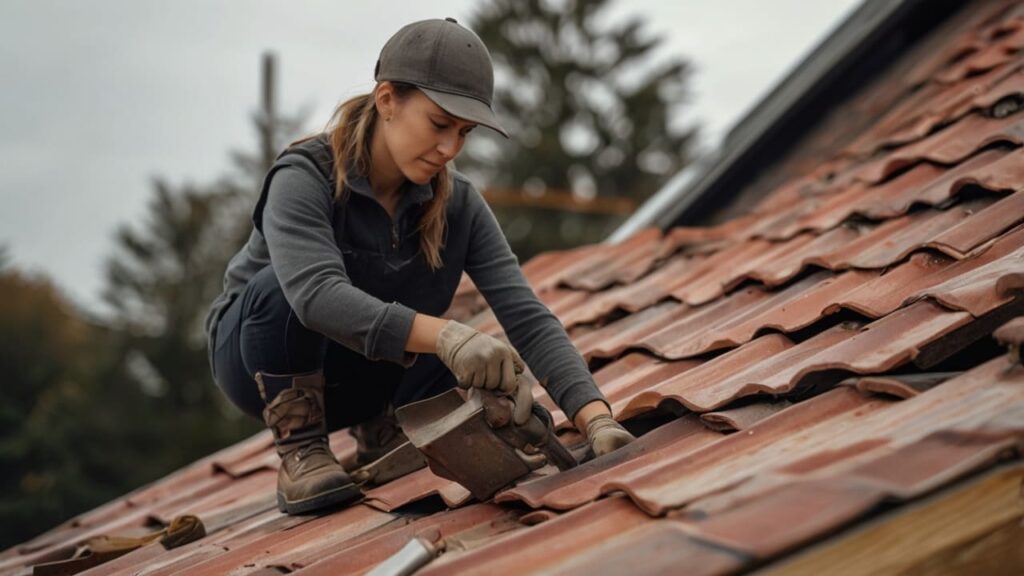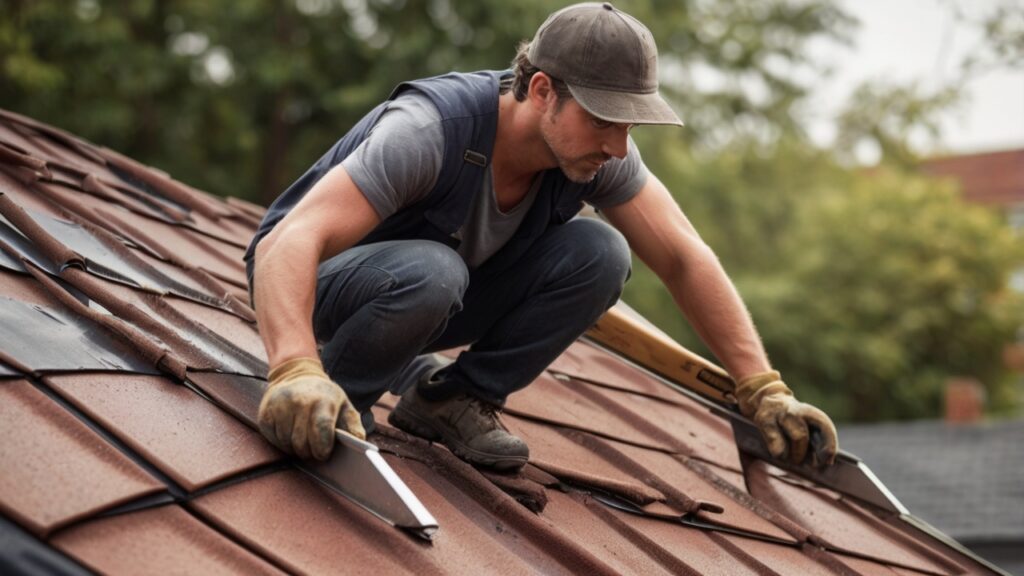It’s not just materials that keep a roof standing tall. The strongest roof design is often the deciding factor in whether your home survives hurricane-level winds or ends up with shingles scattered across the yard. Reliable contractors understand this, which is why trusted roofing repair experts don’t just swap out damaged tiles—they evaluate the structural integrity of your entire roofing system.
I’ve personally seen neighbors in North Carolina argue over hip roof vs. gable roof strength after a tropical storm. The one with the steeper, hip-style roof came out with minor cosmetic damage, while the gable roof next door had panels ripped clean off. It’s not luck—it’s design. The most durable roof structure is about shape, airflow, and resistance, not just good-looking shingles.
The truth is simple but not always convenient: reliable repairs often start with professional assessment of your roof’s geometry. A new layer of asphalt shingles may look neat, but without the right wind-resistant roof design, problems will keep repeating.
- Why Roof Design Matters More Than People Think
- Comparing Roofs in Extreme Weather
- Roof Structural Integrity: The Invisible Factor
- Tools, Spare Parts, and Repair Processes
- Case Study: A Storm-Tested Roof
- Expanding the Discussion: Beyond Strength
- Common Problems When Roof Design is Ignored
- Expert Opinions on Wind-Resistant Roof Design
- FAQs
Why Roof Design Matters More Than People Think
Roof design is underestimated. Many homeowners obsess over what is the most affordable roofing material, or even ask about the best temperature for roofing projects, but fewer pause to think about the actual shape and slope. Yet, shape dictates strength.
- Hip roofs slope on all four sides, dispersing wind pressure evenly.
- Gable roofs (the classic triangle style) are cheaper but create flat surfaces for wind to push against.
- Low-slope roofs are practical for certain climates but need stronger anchoring and waterproofing systems.
According to Dr. Linda Rogers, a structural engineer specializing in residential roofing, “You can upgrade shingles every decade, but if the design resists wind poorly, you’re always one storm away from costly damage.”
Comparing Roofs in Extreme Weather
Hip Roof vs. Gable Roof Strength
The hip roof almost always wins in hurricanes. Its aerodynamic design reduces uplift. Gables, while popular and affordable, act like sails in high winds. If you live in coastal areas or states like North Carolina, the difference can mean thousands of dollars in repair costs.
Low-Slope and Flat Roof Systems
Flat or low-slope roofs are not weak by definition, but they require specialized reinforcement. Water pooling is a common issue. Modern types of low slope roofing systems use membranes, tapered insulation, and advanced drainage solutions. These aren’t just spare parts—they’re engineered systems designed to fight gravity and storms at once.
Advanced Structural Solutions
Some contractors even recommend butterfly roofs or interlocking truss systems for resilience, though these are less common in residential builds. The key isn’t always about trendy design, but about local standards. Many North Carolina roof design standards now incorporate stricter wind ratings due to recent hurricanes.
Roof Structural Integrity: The Invisible Factor
Think of structural integrity like the unseen skeleton of your home. Professional repairs involve:
- Reinforcing trusses with hurricane clips and straps.
- Inspecting decking thickness—thin boards flex and crack under suction forces.
- Using impact-resistant underlayment.
One roofer I spoke with in Wilmington explained how they often replace rusted nails with ring-shank nails or screws that grip decking more firmly. “It’s small details like this,” he said, “that separate quick fixes from durable, trusted repairs.”
Tools, Spare Parts, and Repair Processes
A professional crew doesn’t show up with just a hammer. They carry:
- Torque-adjustable nail guns to avoid overdriving fasteners into brittle decking.
- Hurricane straps and galvanized connectors for reinforcing the frame.
- Sealant guns with elastomeric caulking designed for expansion.
Sometimes, even replacing small parts like ridge vents or starter strips can dramatically increase resistance. These might seem minor, but they’re critical to the most durable roof structure.
Case Study: A Storm-Tested Roof
In 2019, a homeowner in Morehead City, NC had their gable roof severely damaged by winds. Instead of a direct replacement, the contractor recommended switching to a hip-style structure with reinforced trusses. The project cost more upfront, but two years later, Hurricane Isaias passed through and the roof only lost a few shingles. Their neighbor’s traditional gable roof, however, suffered major losses.
This real-life story shows why it’s not just about materials. The strongest roof design creates peace of mind and long-term savings.
Expanding the Discussion: Beyond Strength
Conversations about roofing naturally branch into other important aspects. For example:
- While strength matters, homeowners also ask about low-maintenance roofing types—because nobody wants a roof that requires constant patchwork.
- Some guides explore affordable roofing material options, since budget often drives choices. It’s possible to balance affordability with reliability if a professional helps with selection.
- Other topics like temperature-sensitive installation conditions can’t be ignored, because even the best roof design fails if installed in poor weather.
Looking ahead, there’s also growing interest in eco-conscious designs—green roofs with vegetation that withstand weather while helping with insulation. Likewise, smart roofing technology that integrates sensors to monitor leaks or wind damage could become part of mainstream standards. These future ideas will continue shaping how we think of roofs beyond simple “coverings.”
Common Problems When Roof Design is Ignored
Skipping design considerations leads to predictable issues:
- Repeated shingle blow-offs.
- Water infiltration due to poor slope drainage.
- Structural flexing that weakens walls over time.
It’s almost like putting premium tires on a weak suspension—materials can’t compensate for poor structure.
Expert Opinions on Wind-Resistant Roof Design
James Ortega, licensed roofer in NC, says: “The strongest roof design isn’t about fashion—it’s about survival. Hip roofs last longer in storms, period. A good contractor will always suggest it if the location demands.”
His advice echoes what many homeowners learn too late: roof geometry and roof structural integrity are investments, not expenses.
FAQs
Q1: What roof design holds up best in hurricanes?
Hip roofs are widely considered the strongest against high winds due to their aerodynamic slopes.
Q2: Are gable roofs bad for windy areas?
Not necessarily, but they require additional bracing and reinforcements to match the resilience of hip roofs.
Q3: Do North Carolina roofing standards require a certain roof design?
State standards emphasize wind resistance, but design choice depends on local building codes and professional recommendations.
The strongest roof design is more than a matter of looks—it’s a blueprint for durability. From hip roofs’ aerodynamic edge to reinforced low-slope systems, strength comes from geometry, not just shingles. Professional, reliable contractors know this and weave it into every repair.
For guidance on choosing the right contractor, check out this roundup of reputable roofing repair professionals in North Carolina. You can also explore more expert roofing insights here or visit Pro Service Tips for broader home repair advice.
A durable roof doesn’t just happen—it’s designed, tested, and maintained by experts who care about structural integrity as much as materials.
If this post gave you clarity, do a quick favor—share it with your friends and neighbors using the buttons below. You never know who’s planning their next roof upgrade and could use this knowledge.



